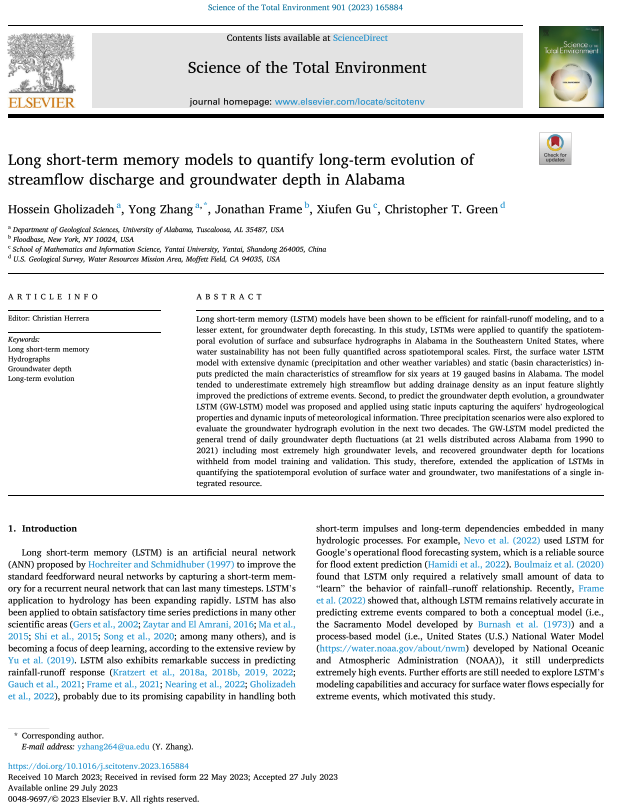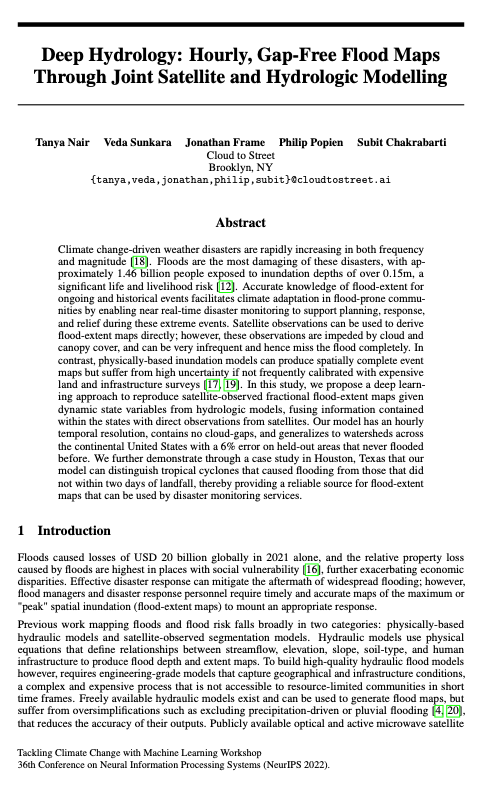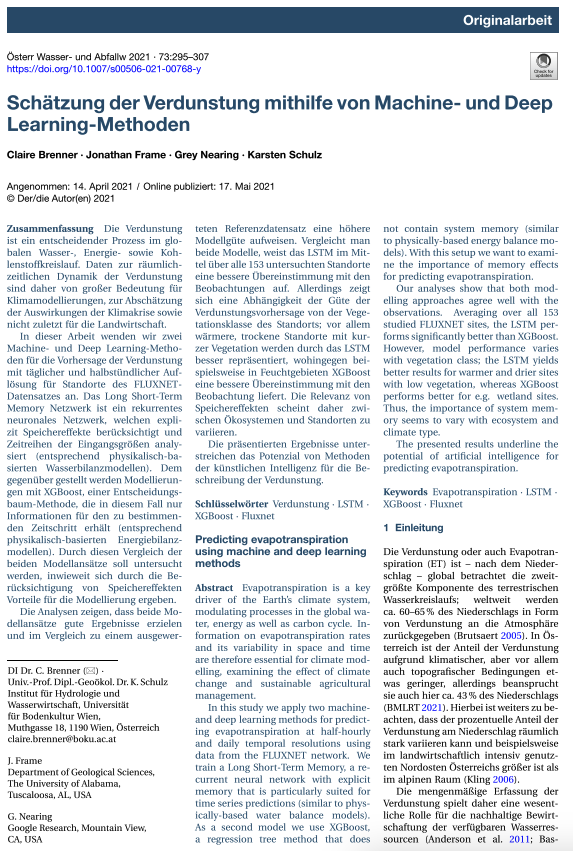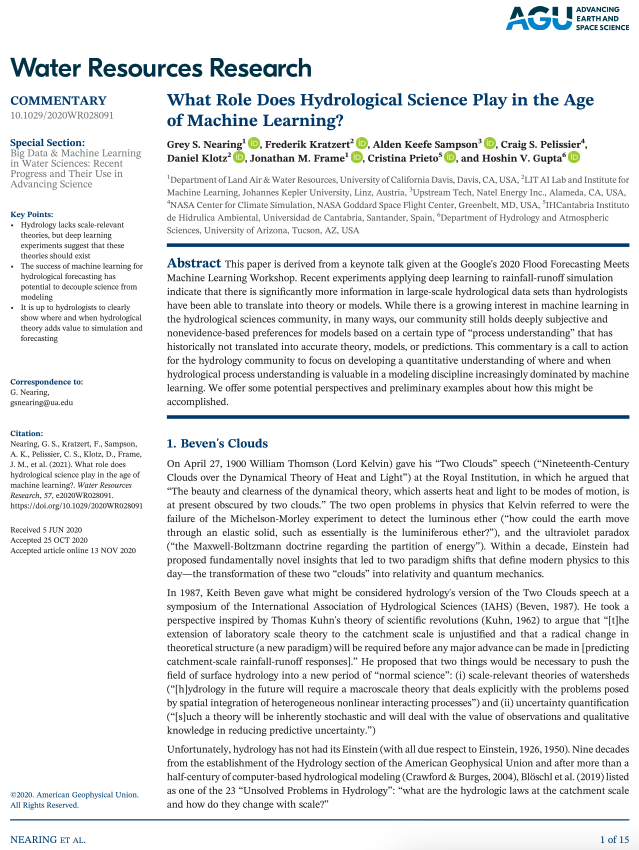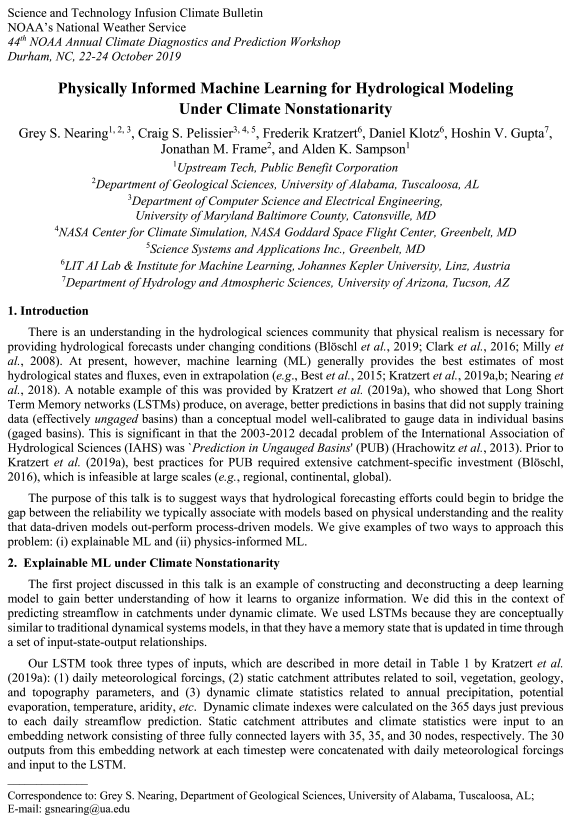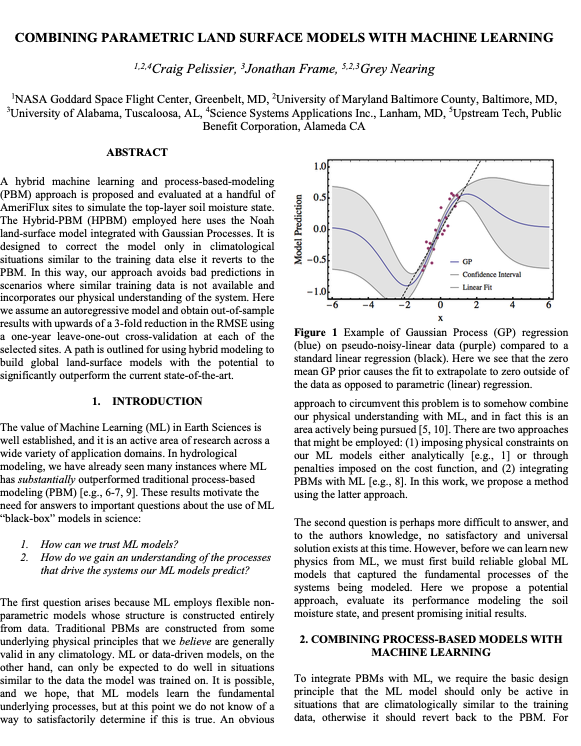Publications
First-Author Publications
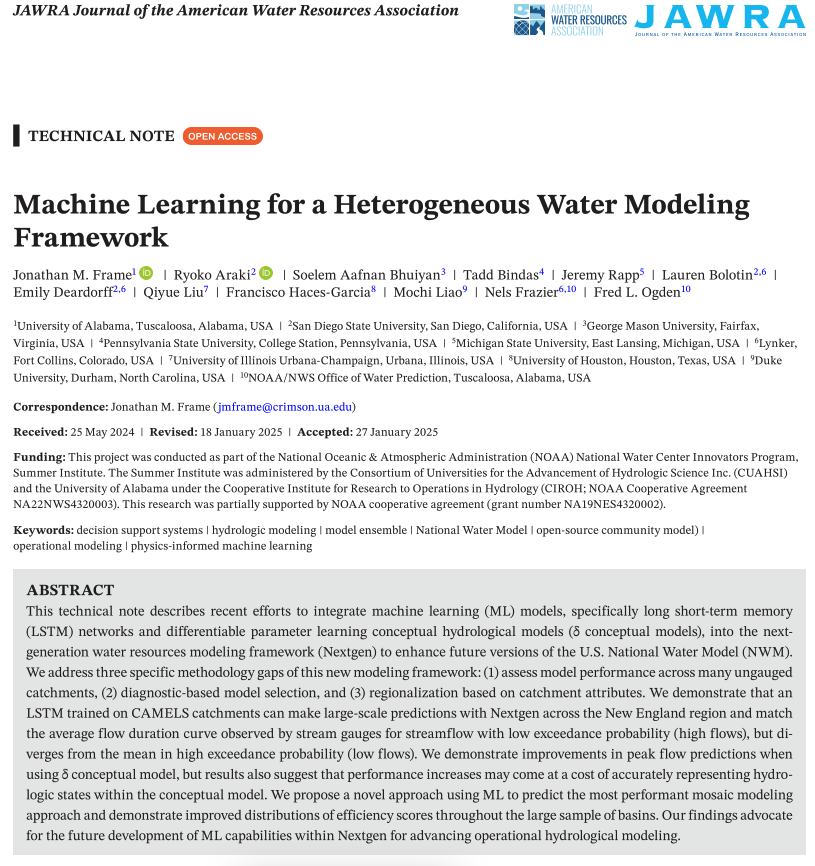
Wiley Link to paper | PDF alternate link | ML for Nextgen (2025)
Jonathan M. Frame, Ryoko Araki, Soelem Aafnan Bhuiyan, Tadd Bindas, Jeremy Rapp, Lauren Bolotin, Emily Deardorff, Qiyue Liu, Francisco Haces-Garcia, Mochi Liao, Nels Frazier, Fred L. Ogden
This paper explores potential machine learning methods most suitable for the Next Generation Water Resources Modeling Framework.
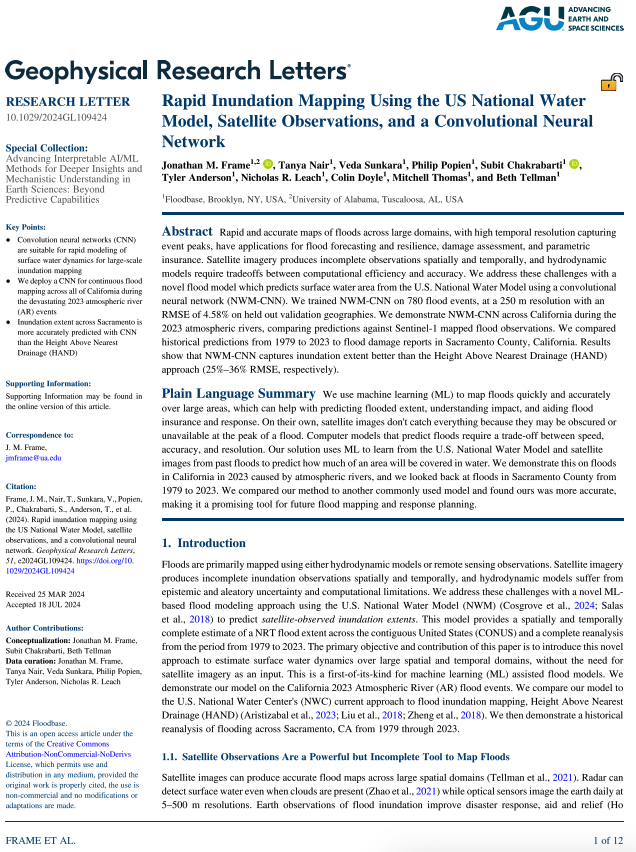
AGU Link to paper | PDF alternate link | Flood Inundation Mapping (2024)
Jonathan M. Frame, Tanya Nair, Veda Sunkara, Philip Popien, Subit Chakrabarti, Tyler Anderson, Nicholas R. Leach, Colin Doyle, Mitchell Thomas, Beth Tellman
This paper proposes a method of generating flood inundation maps based on large-domain hydrologic simulations. Demonstrating predictive performance during the most damaging flood season in California history. Highlighting the need to go beyond simple streamflow-based flood predictions which fail to capture pluvial flooding.
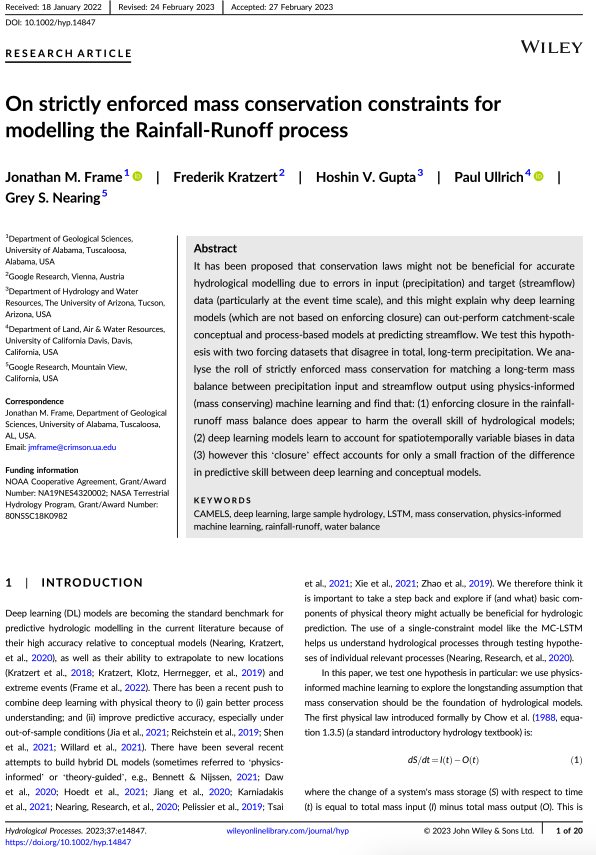
Wiley Link to paper | PDF alternate link | Mass Balance Modeling (2023)
Jonathan M. Frame, Frederik Kratzert, Hoshin V. Gupta, Paul Ullrich, Grey S. Nearing
This paper explores the watershed boundary as a control volume of mass conservation, and the potential for machine learning with mass balance constraints to learn volumetric biases in data.

HESS Link to paper | PDF alternate link | Extreme Event Modeling (2022)
Jonathan M. Frame, Frederik Kratzert, Daniel Klotz, Martin Gauch, Guy Shalev, Oren Gilon, Logan M. Qualls, Hoshin V. Gupta, and Grey S. Nearing
This paper explores the ability of machine learning models to make predictions of extremely large, and rare, runoff events, particularly when those events are not included in training data.
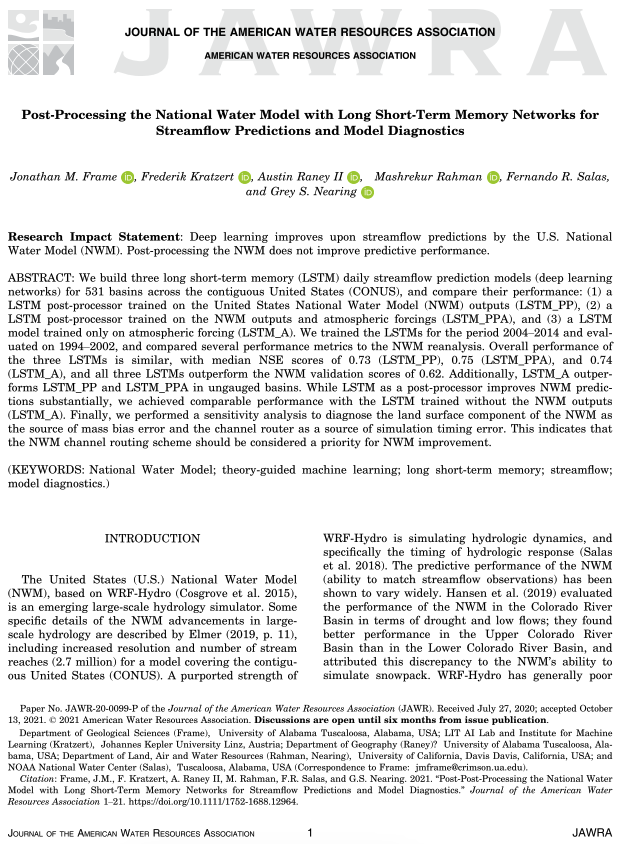
Wiley Link to paper | PDF alternate link | Post-Processing NWM (2021)
Jonathan M. Frame, Frederik Kratzert, Austin Raney II, Mashrekur Rahman, Fernando R. Salas, Grey S. Nearing
This paper explores a trivial method of combining hydrologic process-based modeling with machine learning. This approach for hybrid modeling is useful for understanding hydrology across large domains, and for identifying weaknesses in hydrological modeling approaches.
Co-authored Publications

Detecting river centrelines and estimating river water surface widths
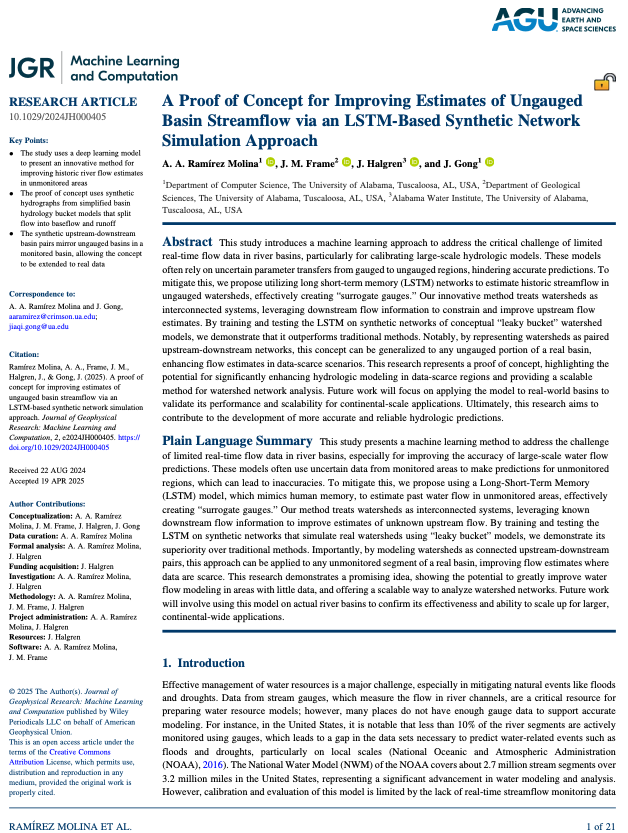
Ramírez Molina et al., 2024, Synthetic experiment for spatially paired sites for data assimilation.
We contributed a software environment (Deep Bucket Lab) for prototyping deep learning modeling techniques with hydrologically realistic synthetic data.

Abramowitz et al., 2024, LSTM as a benchmark for land surface energy fluxes
We developed an LSTM model as the benchmark for evaluating land surface models’ predictions of turbulent carbon, water, and heat fluxes using flux tower data from 170 sites.


